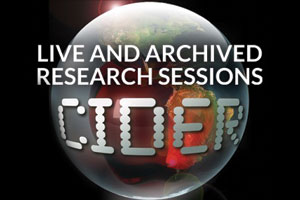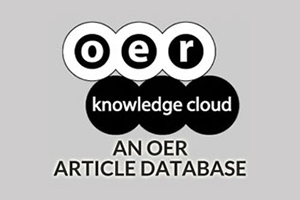Profiles in self-regulated learning in the online learning environment
DOI:
https://doi.org/10.19173/irrodl.v11i1.769Keywords:
self-regulated learning, online learningAbstract
Individuals who are self-regulated in their learning appear to achieve more positive academic outcomes than individuals who do not exhibit self-regulated learning behaviors. We suggest that distinct profiles of self-regulated learning behaviors exist across learners. In turn, these profiles appear to be associated with significantly different academic outcomes. The purpose of the current study was to examine whether profiles for self-regulated learning skills and strategies exist among learners. To achieve this purpose, we conducted two studies using two different samples. We administered the Online Self-Regulated Learning Questionnaire (OLSQ), a 24-item scale with a 5-point Likert-type response format, to students enrolled in online degree programs at a large, public university located in the Southwestern United States. The OSLQ consists of six subscale constructs, including environment structuring, goal setting, time management, help seeking, task strategies, and self-evaluation. Latent class analyses were performed with participant subscale scores from the OSLQ. Our results indicate the presence of five, distinct profiles of self-regulated learning replicated across both study samples: super self-regulators, competent self-regulators, forethought-endorsing self-regulators, performance/reflection self-regulators, and non- or minimal self-regulators. Results also indicate that individuals differ significantly in their academic achievement according to their profile membership; for example, minimal and disorganized profiles of self-regulated learning are both associated with similar, poorer academic outcomes (e.g., lower GPAs). These profiles in self-regulated learning may be viewed as contributing to the development of theory by elucidating how exactly individuals are and are not self-regulated in their learning. The authors suggest future research directions.Published
How to Cite
Issue
Section
License
This work is licensed under a Creative Commons Attribution 4.0 International License. The copyright for all content published in IRRODL remains with the authors.
This copyright agreement and usage license ensure that the article is distributed as widely as possible and can be included in any scientific or scholarly archive.
You are free to
- Share — copy and redistribute the material in any medium or format
- Adapt — remix, transform, and build upon the material for any purpose, even commercially.
The licensor cannot revoke these freedoms as long as you follow the license terms below:
- Attribution — You must give appropriate credit, provide a link to the license, and indicate if changes were made. You may do so in any reasonable manner, but not in any way that suggests the licensor endorses you or your use.
- No additional restrictions — You may not apply legal terms or technological measures that legally restrict others from doing anything the license permits.







